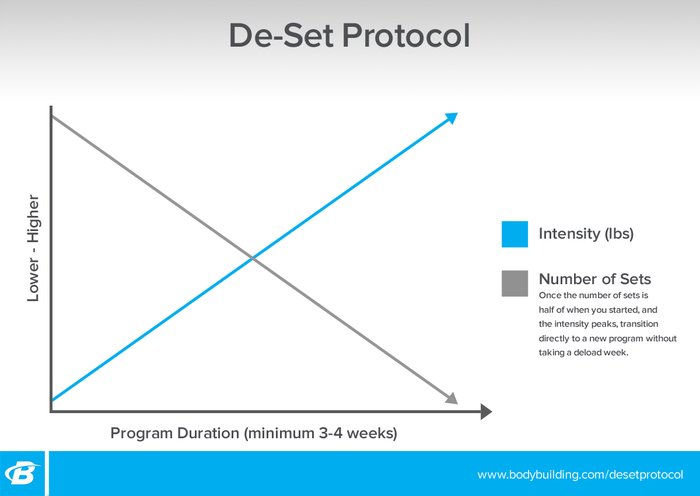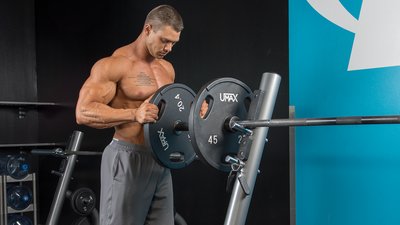A tried-and-true way to get stronger in the gym is to work up to a "peak load," such as a rep PR, over a number of workouts. This can take anywhere from a few weeks to a couple months, but once you touch the top—say, setting a new 5RM personal best—you generally drop down a bit at the end before starting a new program.
This is known as a "deload," "unload," or "taper," and it usually lasts about a week. During this time, you may keep lifting, but you don't go over around 60 percent of your 1RM, depending on the program you follow.

So your successive bench press workouts could look something like this:
- Bench press peak week: 3 sets of 5, top set 275 lbs., new 5-rep PR
- Bench press deload week: 3 sets of 5, 185 lbs.
- New program: Dumbbell bench press, 6 sets of 5, 75 lbs.
Although in theory it makes sense to deload at the end of a routine to prepare, or more appropriately, "repair" the body for the next program to follow, I've always found it to be redundant. You go light at the end of the program, only to start light in the next program. The new program is already a deload in its own way. Get on with it!
A better choice, in my experience, is to "deset" rather than deload when the body reaches a peak level of strength and a reduction in workload is warranted. In other words, reduce the volume, not the intensity. Here's how to do it.
Progressive Resistance, Regressive Sets
The concept of peaking is simple: Start with a higher number of sets and a lower load, and gradually increase the load and decrease the sets. Every workout or two, put a bit more weight on the bar and drop one set for each exercise. Here's how it might look for our hypothetical bencher:
- Start of program: 6 working sets of 5 in bench press, 250 lbs.
- Week 2: 5 working sets, top set 260 lbs.
- Week 3: 4 working sets, top set 270 lbs.
- Week 4 (Peak week): 3 sets of 5, top set 275 lbs., new 5-rep PR

Once you reach about half the number of sets you started with, it's time to start a new program.
This approach to training works exceptionally well. It maintains a high level of performance, while reducing stress on the body and minimizing the risk of injury.
Even with all the benefits this method provides, though, some lifters feel that the short workouts at the end of a routine don't have enough volume to make sufficient gains. They're wrong.
The truth is that there's actually more volume than you think in a short and heavy peaking routine. First of all, although the number of work sets may go down, the number of warm-up sets will go up as the loads get heavier. You'll need more prep sets to prepare the nervous system and musculoskeletal tissue for the heavier loads. That will increase the workout duration.
It's also very common for lifters to extend the last set or otherwise add extra volume on these peak training days. A single back-off set to near failure may not seem like a major addition, but it adds plenty of exertion, and helps you achieve a serious workload by the end of the workout. It's no wonder someone feels like they need a full-on deload after surviving a gauntlet like that!
Here's a better way: Treat your peak week with respect. Hit the reps, keep the weights heavy, and don't sweat the somewhat decreased volume. Bask in your new PR, and don't add extra sets after you've hit your peak sets. Then, rather than strolling through a low-volume, low-intensity deload for a week, transition right into your new program.
Is Your Peak a Cliff?
There's a catch with this approach, though. If your peaking protocol is overly aggressive from the start, then you're setting yourself up to fail.
The process of progressively increasing the weight until you reach a peak load should take 3-4 weeks, or more. If it happens before that time, you started way too heavy! You need to earn your right to go heavy by accumulating some quality volume first.
The key is to start with the right weight, not too heavy and not too light, and to make progress each workout until you reach a peak. When that happens, start over again with a new set of exercises. This way, you keep sending your body the message to get stronger, rather than giving it a two-week vacation where the message is to get weaker.
This approach has worked wonders for accomplished strength athletes for years. Make it work for you, and waste less of your precious gym time!

